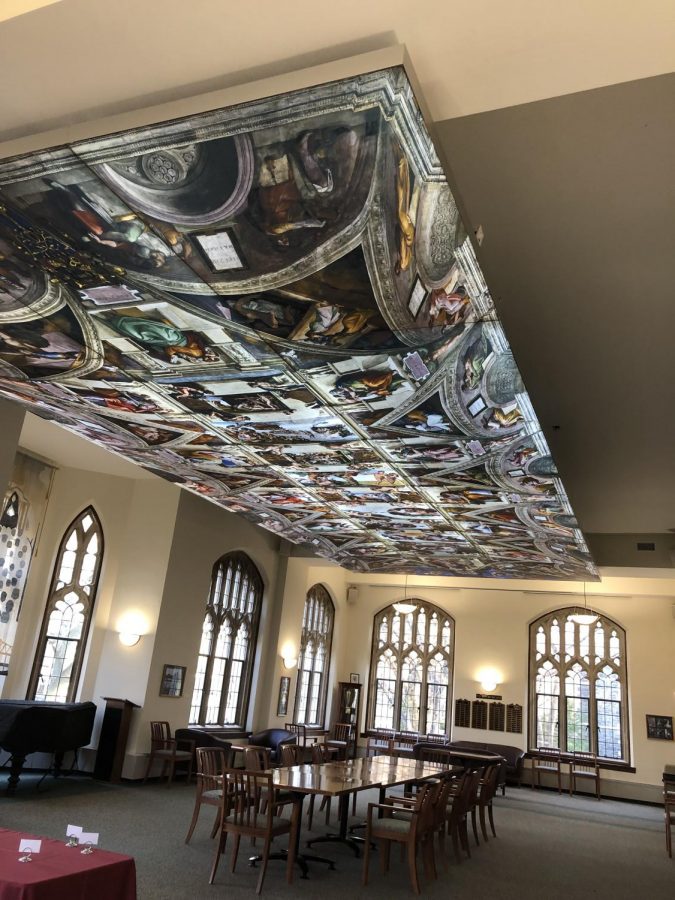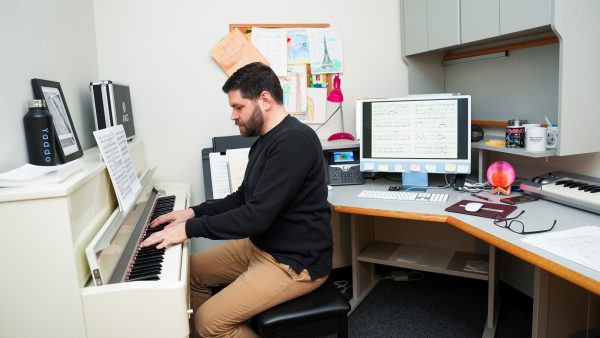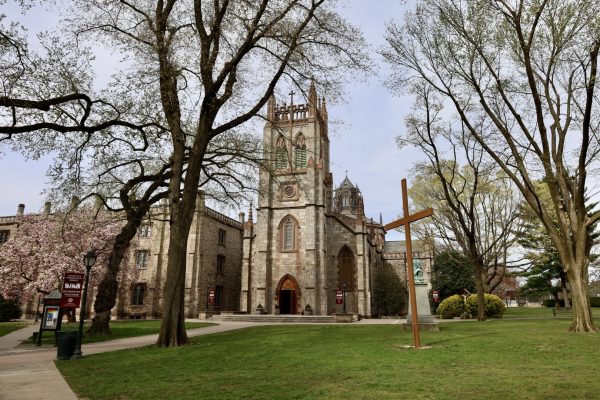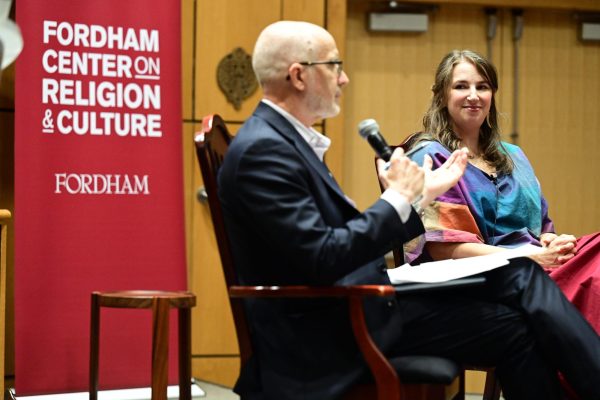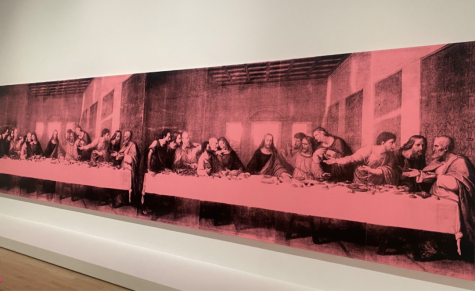Sistine Chapel Reproduction Installed in Butler Commons
By Eliot Schiaparelli
It all started with an early morning visit to The Metropolitan Museum of Art and a private tour that was any art history major’s dream. The party included Rev. Joseph M. McShane, S.J., president of the university, alumni Edward M. Stroz GSB ’79, his wife Sally Spooner, Met administrator Erin Pick, and art history department chair Maria Ruvoldt. They were there to see “Michelangelo: Divine Draftsman and Designer.”
The central piece in the exhibit was a one quarter sized reproduction of the Sistine Chapel ceiling. According to Ruvoldt, upon entering the room McShane was taken with the piece and knew it would make a great addition to Fordham.
The group then met up with Carmen Bambach, a world renowned Michelangelo expert and curator of the exhibit. Bambach once taught at Fordham and was hired by McShane when he was Dean of FCRH.
After that day, Ruvoldt, McShane and Pick put together a proposal for The Met detailing why Fordham could give the piece a good home at the close of the exhibit. The proposal contained a letter from McShane pointing out the connections between Fordham and The Met and telling The Met how the piece would be used.
Ruvoldt said she thinks Fordham was lucky to be able to secure the piece over other interested parties.
“At Fordham, we try to think of New York City as the campus for our students and the Met has always played a central role in the way we teach art history,” she said. “So the idea was we could create a reciprocal relationship there and we would install the ceiling somewhere where it would be accessible to the Fordham Community, and that multiple departments, not just art history, could use it as a teaching tool.”
Ruvoldt said, “I think the idea that it would be used as a teaching tool and would be widely accessible to the Fordham community is what helped make The Met see the university as a great landing place for the ceiling.”
Unfortunately, the piece, which was placed in Butler Commons in December, has not been as accessible as many students originally hoped. Since the ceiling was installed, the doors to the room in Duane Library have been locked for the majority of the time.
Shannon Zipfel, FCRH ‘21, is an art history major and was thrilled to hear that the piece was on campus.
“I’m really excited about this addition to the Fordham campus and I feel like it will be helpful in my art history education. However, I’m also disappointed that it is not more accessible to students,” she said. “I feel like that is a missed opportunity and prevents students from appreciating the piece that Fordham has worked so hard to acquire. Ideally, the room would be open at least at certain times for students to come and view the reproduction.”
Ruvoldt said she plans to make use of the piece next year when she teaches a class on Michelangelo, and Intro Art History classes are being encouraged to view it during their Renaissance unit.
The Sistine Chapel ceiling is among one of the most famous works of art in the world. The focal point of the piece, God and Adam’s pointed hands, has become a motif in pop culture and advertising. According to Ruvoldt, it is not the only extraordinary part of the piece.
“When Michelangelo paints that ceiling he is completing the decoration of a chapel that began a generation before, in the 1480s,” she said. “And he comes in and confronts all the masterpieces of that generation that are painted on the sidewalls of the chapel and he paints this story of Genesis from the creation of the world through Noah and the flood and essentially ties the whole chapel together.”
The installation of the reproduction was made possible by a donation from Stroz and Spooner. It is a backlit digital photograph printed on fabric and encased in plexiglass.
Ruvoldt said the original piece is an incredible achievement based on its sheer size.
“As a fresco, it’s an enormous amount of square footage that Michelangelo paints and it’s recognized almost immediately as an incredible achievement, a technical achievement and an artistic achievement because he takes these complicated stories from Genesis,” she said.
Ruvoldt said the piece will bring the Sistine Chapel to her students when she cannot bring them to it.
“To see the whole thing in its entirety in the way that you can when you have that reproduction in front of you, gives you a much more palpable sense of the extent of that achievement and of how enormous a painting it is,” she said. “How many figures are in it. How complicated it is in terms of storytelling and yet how accessible it is to a viewer.”





































































































































































































